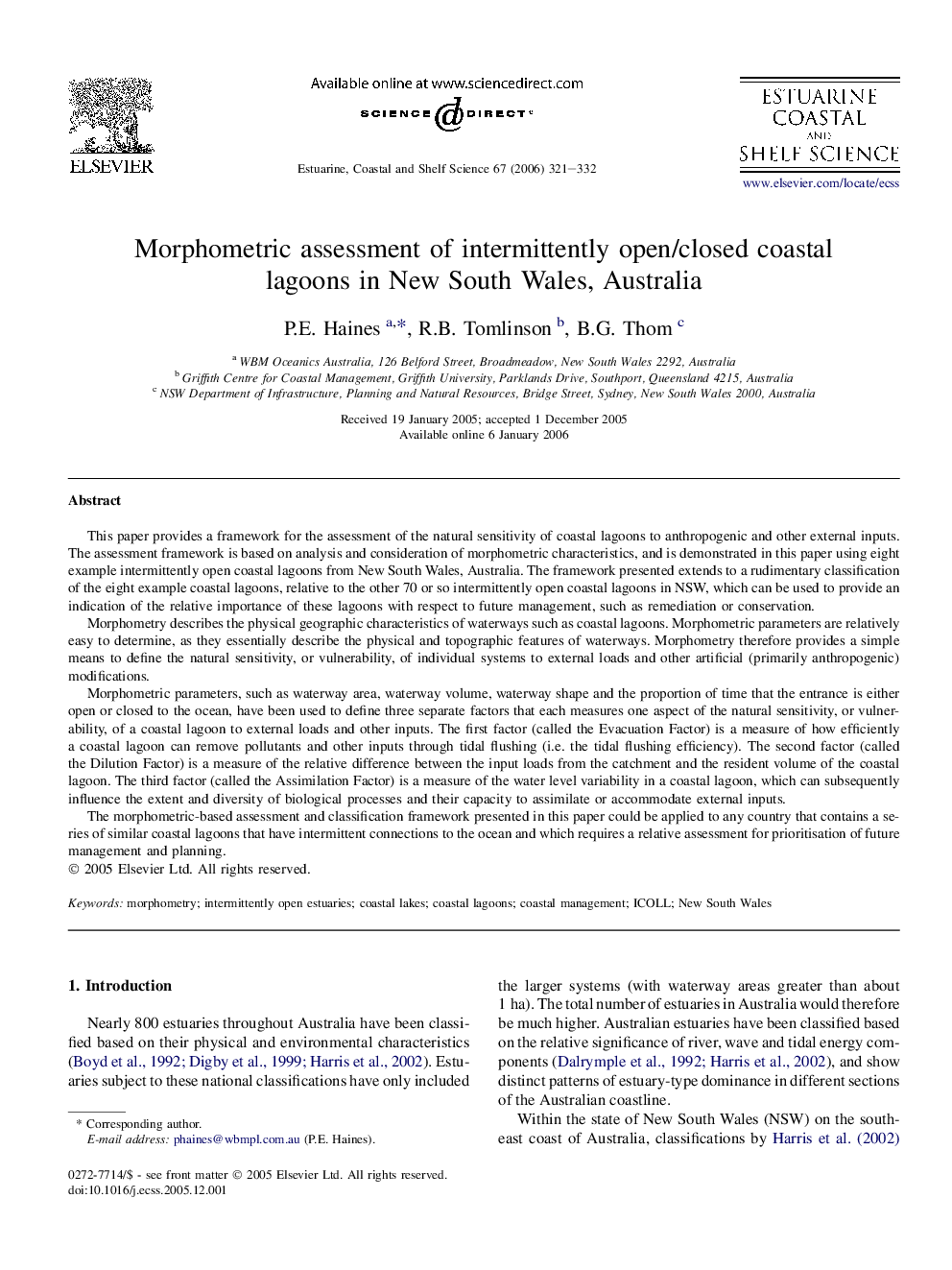| کد مقاله | کد نشریه | سال انتشار | مقاله انگلیسی | نسخه تمام متن |
|---|---|---|---|---|
| 4542341 | 1626714 | 2006 | 12 صفحه PDF | دانلود رایگان |

This paper provides a framework for the assessment of the natural sensitivity of coastal lagoons to anthropogenic and other external inputs. The assessment framework is based on analysis and consideration of morphometric characteristics, and is demonstrated in this paper using eight example intermittently open coastal lagoons from New South Wales, Australia. The framework presented extends to a rudimentary classification of the eight example coastal lagoons, relative to the other 70 or so intermittently open coastal lagoons in NSW, which can be used to provide an indication of the relative importance of these lagoons with respect to future management, such as remediation or conservation.Morphometry describes the physical geographic characteristics of waterways such as coastal lagoons. Morphometric parameters are relatively easy to determine, as they essentially describe the physical and topographic features of waterways. Morphometry therefore provides a simple means to define the natural sensitivity, or vulnerability, of individual systems to external loads and other artificial (primarily anthropogenic) modifications.Morphometric parameters, such as waterway area, waterway volume, waterway shape and the proportion of time that the entrance is either open or closed to the ocean, have been used to define three separate factors that each measures one aspect of the natural sensitivity, or vulnerability, of a coastal lagoon to external loads and other inputs. The first factor (called the Evacuation Factor) is a measure of how efficiently a coastal lagoon can remove pollutants and other inputs through tidal flushing (i.e. the tidal flushing efficiency). The second factor (called the Dilution Factor) is a measure of the relative difference between the input loads from the catchment and the resident volume of the coastal lagoon. The third factor (called the Assimilation Factor) is a measure of the water level variability in a coastal lagoon, which can subsequently influence the extent and diversity of biological processes and their capacity to assimilate or accommodate external inputs.The morphometric-based assessment and classification framework presented in this paper could be applied to any country that contains a series of similar coastal lagoons that have intermittent connections to the ocean and which requires a relative assessment for prioritisation of future management and planning.
Journal: Estuarine, Coastal and Shelf Science - Volume 67, Issues 1–2, March 2006, Pages 321–332